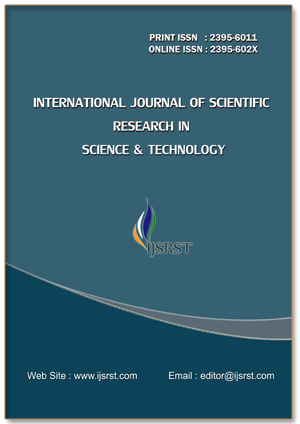One Pot Synthesis and Antimicrobial Evaluation of Schiif Base 1,2,4-Triazole Derivatives
Keywords:
Schiff base, Antimicrobial agents, Heterocyclic, triazolesAbstract
The development of heterocyclic compounds with potent antimicrobial properties remains a crucial area of medicinal chemistry. In this study, a series of Schiff base derivatives incorporating the 1,2,4-triazole core were synthesized via a green, one-pot condensation approach using aromatic aldehydes and substituted 1,2,4-triazole derivatives under the solvent. The protocol offers high yields, operational simplicity. The synthesized compounds were characterized by IR, 1H-NMR, and Mass spectrometry. Their antimicrobial activity was assessed against Gram-positive bacteria (Staphylococcus aureus), Gram-negative bacteria (Escherichia coli), and fungal strains (Candida albicans and Aspergillus niger) using the agar well diffusion method. Several derivatives exhibited moderate to significant antimicrobial activity, highlighting the potential of Schiff base-triazole hybrids as promising lead structures for the development of new antimicrobial agents.
📊 Article Downloads
References
Ghazaei, C. (2022). Upcoming multi-drug-resistant and extensively drug-resistant Bacteria. Research in Molecular Medicine, 10(2), 85-96.
Terreni, M., Taccani, M., & Pregnolato, M. (2021). New antibiotics for multidrug-resistant bacterial strains: latest research developments and future perspectives. Molecules, 26(9), 2671.
Shukla, P. K., Verma, A., & Mishra, P. (2017). Significance of nitrogen heterocyclic nuclei in the search of pharmacological active compounds. New perspective in agricultural and human health, 100.
Guan, Q., Xing, S., Wang, L., Zhu, J., Guo, C., Xu, C., ... & Sun, H. (2024). Triazoles in medicinal chemistry: physicochemical properties, bioisosterism, and application. Journal of Medicinal Chemistry, 67(10), 7788-7824.
Elgazar, S. M., Abd El-Karim, A. T., Mahmoud, W. H., & El-Sherif, A. A. (2025). Comprehensive Analysis of Nitrogen–Oxygen Schiff Base Derived from Triazole and Its Metal Complex: Synthesis, Structural Characterization, and Biological Activities with Theoretical Insights for Anti-Helicobacter pylori, Antitumor, and Anti-COVID-19 Applications. Egyptian Journal of Chemistry, 68(3), 169-191.
Gnanadeepam, Y., Shankar, B., & Tamilselvi, A. (2025). Anticancer activity: synthesis, characterization and DNA binding of a 1, 2, 4-triazole-based Zn (ii) complex. New Journal of Chemistry.
Farghaly, T. A., Masaret, G. S., Riyadh, S. M., & Harras, M. F. (2024). A Literature Review Focusing on the Antiviral Activity of [1, 2, 4] and [1, 2, 3]-triazoles. Mini Reviews in Medicinal Chemistry, 24(17), 1602-1629.
Tacconelli, E., Carrara, E., Savoldi, A., Harbarth, S., Mendelson, M., Monnet, D. L., ... & Zorzet, A. (2018). Discovery, research, and development of new antibiotics: the WHO priority list of antibiotic-resistant bacteria and tuberculosis. The Lancet infectious diseases, 18(3), 318-327.
Zafar, W., Sumrra, S. H., & Chohan, Z. H. (2021). A review: Pharmacological aspects of metal based 1, 2, 4-triazole derived Schiff bases. European journal of medicinal chemistry, 222, 113602.
Kryukova, M. A., Sapegin, A. V., Novikov, A. S., Krasavin, M., & Ivanov, D. M. (2020). New Crystal Forms for Biologically Active Compounds. Part 2: Anastrozole as N-Substituted 1, 2, 4-Triazole in Halogen Bonding and Lp-π Interactions with 1, 4-Diiodotetrafluorobenzene. Crystals (2073-4352), 10(5).
Aly, A. A., Hassan, A. A., Mohamed, N. K., Abd El-Aal, A. S., Balboul, B. A., Nayl, A. A., ... & Ramadan, M. (2025). Synthesis, Reactions, and Biological Applications of 1, 2, 4-triazoles: A Review. Current Organic Chemistry, 29(11), 841-868.
El‐Sebaey, S. A. (2020). Recent advances in 1, 2, 4‐triazole scaffolds as antiviral agents. ChemistrySelect, 5(37), 11654-11680.
K Kamboj, V., K Verma, P., Dhanda, A., & Ranjan, S. (2015). 1, 2, 4-triazole derivatives as potential scaffold for anticonvulsant activity. Central Nervous System Agents in Medicinal Chemistry (Formerly Current Medicinal Chemistry-Central Nervous System Agents), 15(1), 17-22.
Kumari, M., Tahlan, S., Narasimhan, B., Ramasamy, K., Lim, S. M., Shah, S. A. A., ... & Kakkar, S. (2021). Synthesis and biological evaluation of heterocyclic 1, 2, 4-triazole scaffolds as promising pharmacological agents. BMC chemistry, 15, 1-16.
Küçükgüzel, Ş. G., & Çıkla-Süzgün, P. (2015). Recent advances bioactive 1, 2, 4-triazole-3-thiones. European journal of medicinal chemistry, 97, 830-870.
Yeğiner, G., Gülcan, M., Işık, S., Ürüt, G. Ö., Özdemir, S., & Kurtoğlu, M. (2017). Transition metal (II) complexes with a novel azo-azomethine Schiff base ligand: Synthesis, structural and spectroscopic characterization, thermal properties and biological applications. Journal of fluorescence, 27, 2239-2251.
Varma, R. S. (2014). Journey on greener pathways: from the use of alternate energy inputs and benign reaction media to sustainable applications of nano-catalysts in synthesis and environmental remediation. Green Chemistry, 16(4), 2027-2041.
Algburi, A., Al-Hasani, H. M., Ismael, T. K., Abdelhameed, A., Weeks, R., Ermakov, A. M., & Chikindas, M. L. (2021). Antimicrobial activity of Bacillus subtilis KATMIRA1933 and Bacillus amyloliquefaciens B-1895 against Staphylococcus aureus biofilms isolated from wound infection. Probiotics and antimicrobial proteins, 13, 125-134.
Ashok, M., Holla, B. S., & Poojary, B. (2007). Convenient one pot synthesis and antimicrobial evaluation of some new Mannich bases carrying 4-methylthiobenzyl moiety. European journal of medicinal chemistry, 42(8), 1095-1101.
Downloads
Published
Issue
Section
License
Copyright (c) 2025 International Journal of Scientific Research in Science and Technology

This work is licensed under a Creative Commons Attribution 4.0 International License.
https://creativecommons.org/licenses/by/4.0




